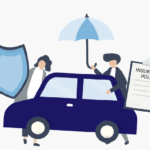What does the “taxes and duties” line of the income statement correspond to?
In the income statement, the “ taxes and duties ” line includes all the mandatory payments that a company must make to the State and local authorities and more generally all the payments imposed by the public authorities.
The taxes and duties in question are as follows:
company car tax;
payroll tax;
commercial space tax;
the apprenticeship tax;
the territorial economic contribution (composed of the CFE and the CVAE);
the social solidarity contribution;
continuing vocational training;
the building effort.
However, you may not be affected by all of these taxes and duties.
Please note: the “taxes and duties” line of the income statement does not include all the taxes to which your company is subject. Indeed, there are also taxes on profits which are the subject of a different line.
What taxes does your business have to pay?
In order to make the correct calculation of taxes and duties for the income statement, you need to know which ones are relevant to your business. Here are the main ones:
If you employ at least one employee: you are liable for the apprenticeship tax . However, you are exempt if you employ apprentices and the annual payroll is less than 6 annual minimum wage (around €112,000).
If you employ more than 49 employees : you are concerned by the participation in the construction effort .
If you have premises or land : you must pay the business property contribution (CFE) . However, there are many cases of CFE exemptions , both permanent (for drivers, craftsmen, farmers, etc.) and temporary (new companies, companies set up in priority neighbourhoods). To benefit from it, you must apply for exemption via a dedicated form.
If your turnover exceeds €500,000 and you exercise an activity taxable by the CFE : you are liable for the Contribution on the Added Value of Businesses ( CVAE ) . On the other hand, when your turnover exceeds €152,500, you must make a simple CVAE declaration.
If your company owns real estate on January 1 of the year of operation : you are concerned by the property tax .
If your company owns or leases vehicles : you must pay company vehicle tax (TVS). This does not apply to all vehicles, and only applies if they are used to transport people.
If you have an establishment with more than 400m 2 dedicated to retail sales and you have a turnover of €460,000 or more : you must pay the tax on commercial surfaces (TASCOM).
If you achieve a turnover exceeding €760,000 : you are liable for the social solidarity contribution of companies.
If you are an employer : you are concerned by participation in continuing vocational training.
How to account for taxes and duties in the income statement?
With regard to the payments of the “taxes and duties” line of the income statement , they are recognized in two stages:
at the time of receipt of the tax notice : debit account 63 corresponding to the tax (631, 632, 635 or 637) and credit account 447;
when the tax is paid : debit account 447 and credit account 512.
You now know everything you need to know about the “taxes and duties” line of your company’s income statement!






Leave a Reply